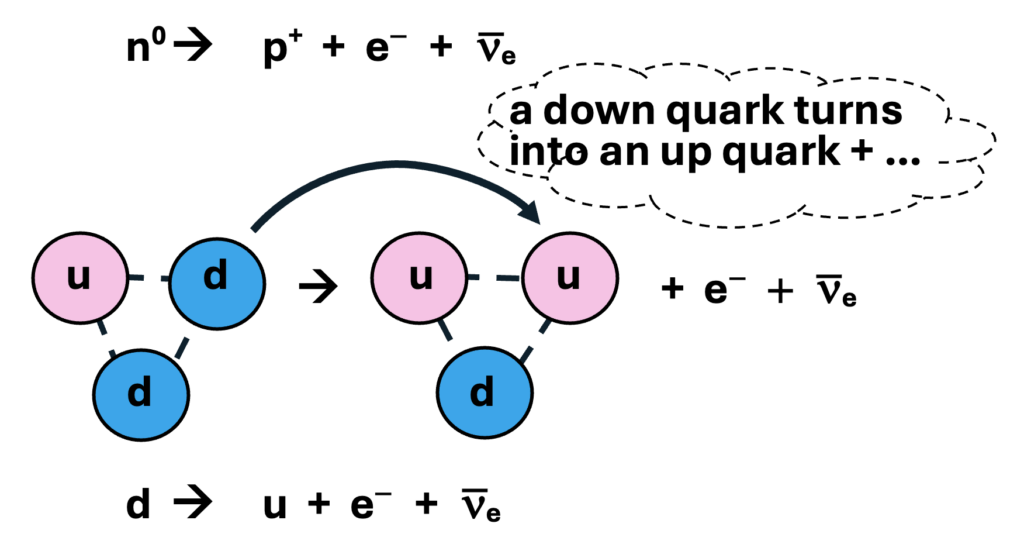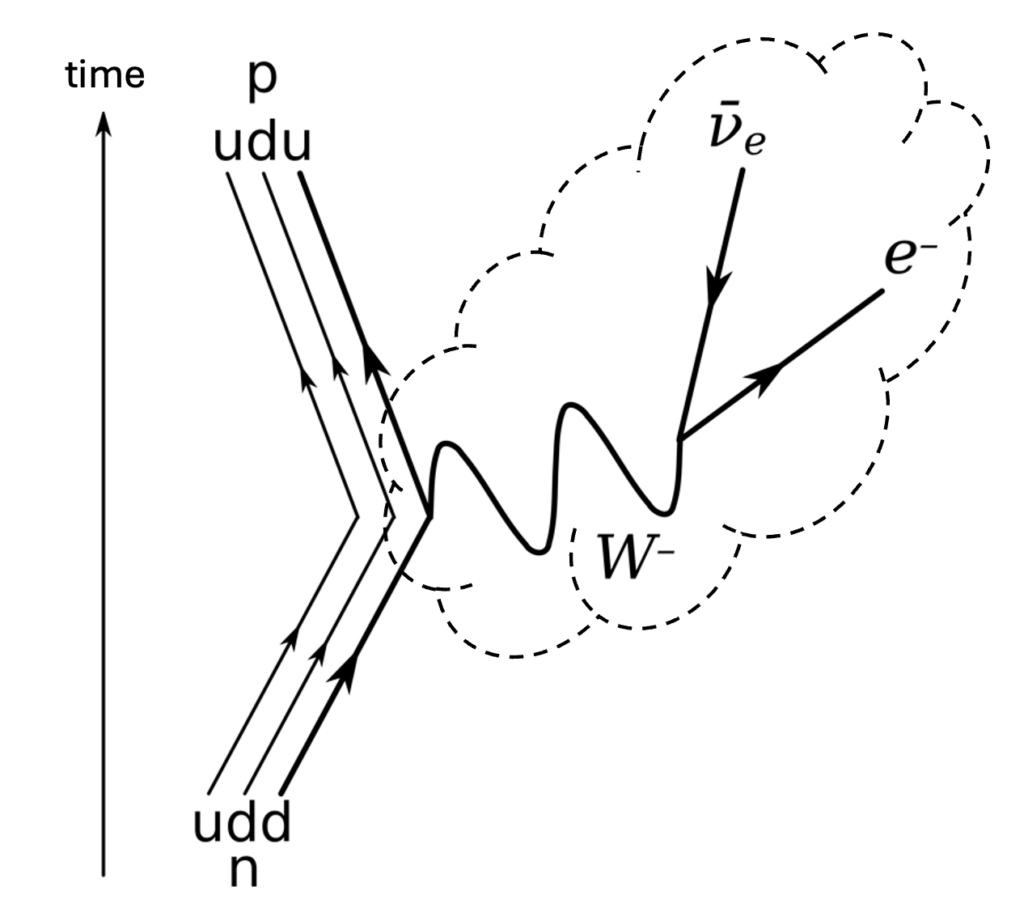Let’s try to make sense of the standard model(s) that conjoin cosmology and current epoch particle physics to account for the transition from a universe comprised of a quark soup to the universe we observe today. This involves thermonuclear reactions that invest the basic quarks into fundamental subatomic particles that are accessible to our experimentation. It isn’t exactly clear where the super-numerous neutrinos and their antiparticles as well as the electrons that have no substructure come from other than the contrived hocus pocus of transitory intermediaries. Were they also ingredients in the primordial soup?
We’ll deal exclusively with the up u and down d quarks that comprise ordinary matter, leaving the exotic particles for others to clarify. What seems clear is that the traditional treatment of the subject is captured in the following diagram:

There’s a lot that makes sense here and a lot that doesn’t. That neutrons and protons are comprised of up and down quarks as shown does not seem worth doubting. That quark composites would disassociate at extremely high temperatures into a plasma soup of the two constituents seems clear. That up quarks possess 2/3 of an electronic charge and down quarks possess 1/3 of an electronic charge certainly must imply that there would be (or have been?) twice as many down quarks as up quarks. At lower temperatures, opposing electric charges of the quarks would result in the increasing presence of composite dud structures as illustrated. Ultimately these neutral structures arise reducing the overall thermal energy of the soup. We are dealing with twice as many down quarks as up quarks and to create predominantly udu structures would seem to require the transmigration of down quarks into up quarks and the resulting unit positive electronic charges require commensurable structures with a unit negative electronic charge. That is where and why the miracle was seen as having to happen. And while we’re at it, since quarks, neutrons, protons, and electrons all possess one half unit of spin, the final product needs to have some vehicle for an additional half unit of spin, and to balance all energy, momentum, and spin equations throughout the process. Voila! Enter the anti-neutrino.
The neutron and proton possess roughly the same rest mass which balances momentum and energy conservation equations (except for a noted variability). The electron’s mass is negligible in comparison and the antineutrino’s is virtually inconsequential. So to state that a ‘miracle happens’ may be a bit harsh, but that’s what it looks like. The following diagram depicts the perceived mechanism of how the trick is done.

In a Feynman diagram the abracadabra is shown to be attributed to a short-lived W– boson:

The mere fact that one can write an equation and draw a diagram that describes a situation doesn’t make it any more factual. So let us consider why this deus ex machina has seemed necessary and what its implications are. What we know with the most certainty is the mass, charge, and spin of the neutron, proton, and electron:
neutron: 1.675 x 10-24 grams or 939.6 MeV
proton: 1.673 x 10-24 grams or 938.8 MeV
electron: 9.109 x 10-28 grams or 0.511 MeV
electron neutrino: < 2.14 × 10-40 grams or < 2 eV
So to make this work, the mass of the up quark has been assumed to be on the order of 2 MeV and the down quark’s mass to be on the order of 4 MeV. The bulk of the mass of the neutron and proton are assumed to be possessed by gluons which are bosons to which the force that keeps the charges of the quarks at bay has been assigned. The assigned amount of the masses assures that the conservation equations balance.
Why the neutrino?
#1) If beta decay were simply electron emission as assumed at the time, then the energy of the emitted electron should have a particular, well-defined value. For beta decay, however, the observed broad distribution of energies suggested that conservation of energy did not apply to the beta decay process.
#2) The amount of spin is integral for nuclei of even mass numbers (i.e., total numbers of protons and electrons) of and half-integral for nuclei of odd mass number. This can be explained if beta decay leaves the mass number unchanged, but then the change of nuclear spin must be an integer. However, electron spin is 1/2, hence angular momentum would not be conserved if beta decay were simply electron emission. A neutrino provides an extra half-integral spin.
Why does the electron not have constituent quarks?
The short answer is that with the currently envisioned scheme the necessary three down quarks would require a super massive boson to hold the charge together as a unit.
So those are the reasons that a miracle has had to be invented.
In the next post I will show why a miracle isn’t required.
Leave a Reply